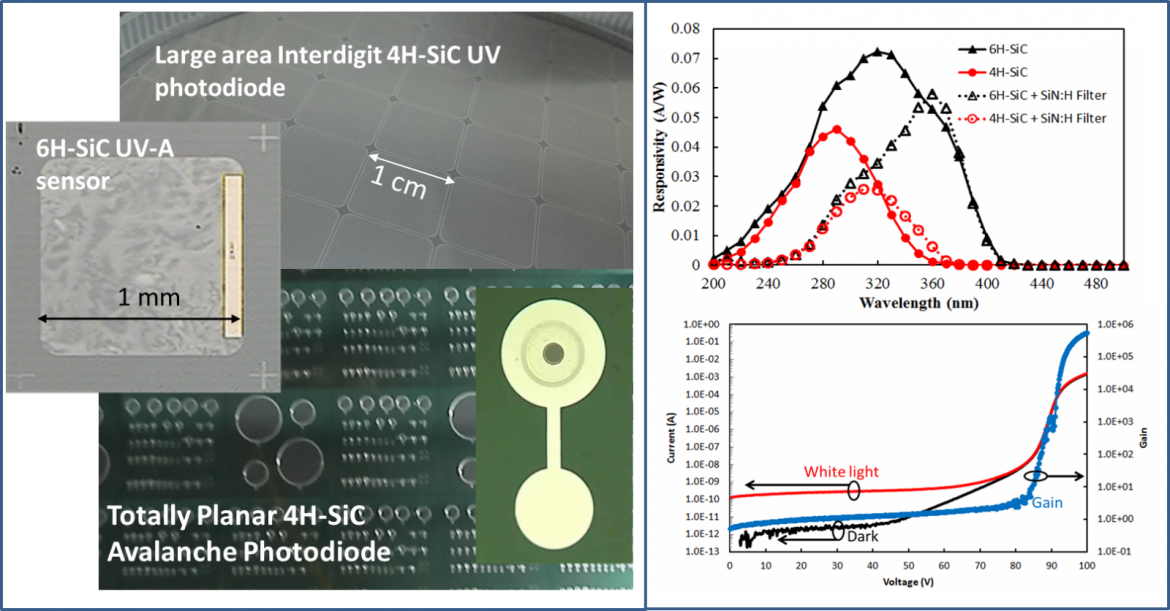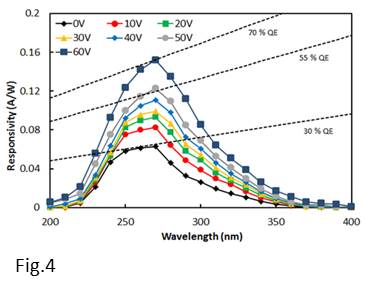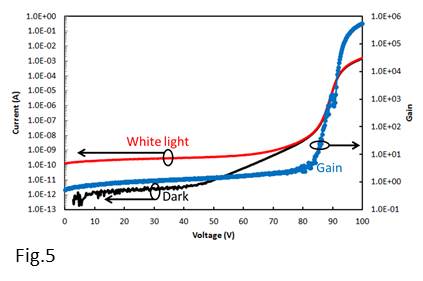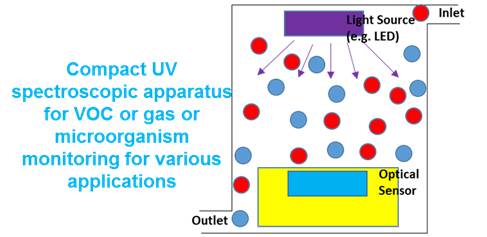
Monitoring of UV radiation and of its components UV-A and UV-B is of great interest for human healthcare. In past years we realised visible blinde 4H-SiC UV detectors based on interdigit Schottky diode and successively, in strict collaboration with STMicrolectronics, thin continuous metal film Schottky UV sensor. This last were adopted by STMicroelectronics to develop and commercialize in the 2015 the UV Index Meter product, denominate UVIS25 http://www.st.com/web/en/press/p3655. More recently, we proposed a 6H-SiC based photodiode with integrated dielectric filter for UV-A sensing (see fig. 1): the 6H poly-type exhibits in fact an energy gap of Eg=3.05 eV (correspondent to a λcut-off=405 nm), a value lower (longer) than that of the 4H poly-type whose energy gap is Eg=3.26 eV (λcut-off=380 nm) and then the use of 6H politype allows a shift toward the UV-A region of the UV sensor response. Experimental Responsivity spectra of 4H-SiC and 6H-SiC sensors without and with integrated filter are shown in fig. 2 evidencing the optimal performance of 6H-SiC diode with filter operating as UV-A sensor. Moreover in the following table are summarised the ratio (in %) between the response in the UV-A range and the response in the whole UV, the peak wavelength of the optical response (λpeak) and responsivity peak value (Rpeak).



Low photon flux applications such as Flame sensing, and parameters monitoring of interest in the medical, environmental and agriculture fields, are the objective of our actual research focused to the development of large area and/or high sensitivity UV sensor eventually with internal gain then operating in avalanche regime (Avalanche Photo Diode).To this purpose, in strict collaboration with STMicroelectrocnics and partially founded by the ClasSiC INFN project we recently developed the first prototype of totally planar 4H-SiC avalanche photodiode (see fig. 3, fig. 4 and fig. 5 reporting respectively the picture of a multichip, a detail showing two different geometries of APD prototype, the Responsivity spectra, the IV curves of APD in dark and under illumination and the obtained optical gain).



Thanks to the collaboration with the Catania (IT) University, the INFN Italian Institute, the Messina (IT) University and the Sussex (UK) University, we tested SiC devices for different applications and in different working ambient. More recently we focused our effort on the development of innovative compact and low power consuming spectrometric systems operating in the UV range for gas, VOC and microorganism monitoring (see fig. 6 for a standard starting scheme).

Reference person: Antonella Sciuto

